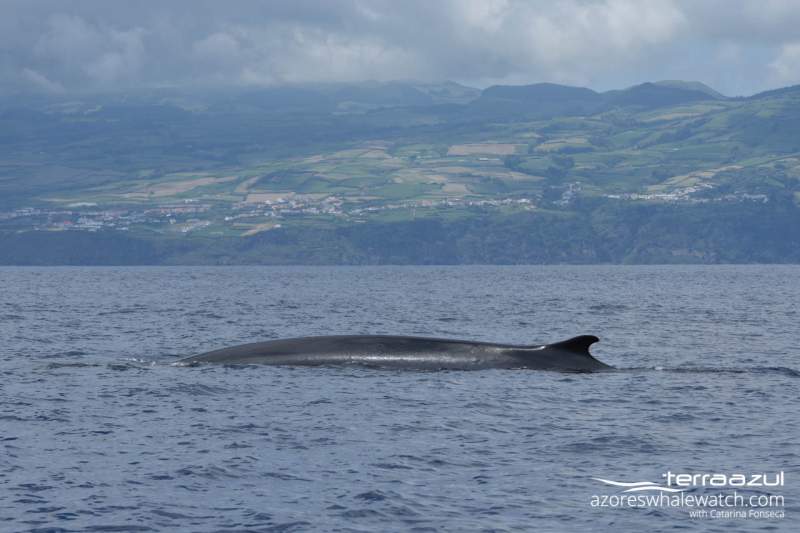
So, today seemed a good day to do a trip and so we went to the sea, but as soon as we left the marina, the winds changed, and the sea conditions got worse, so we had to go back. So now I’m here to talk about the Fin Whale (Balaenoptera physalus), that are now heading back to lower latitudes for warmer waters for breeding season.
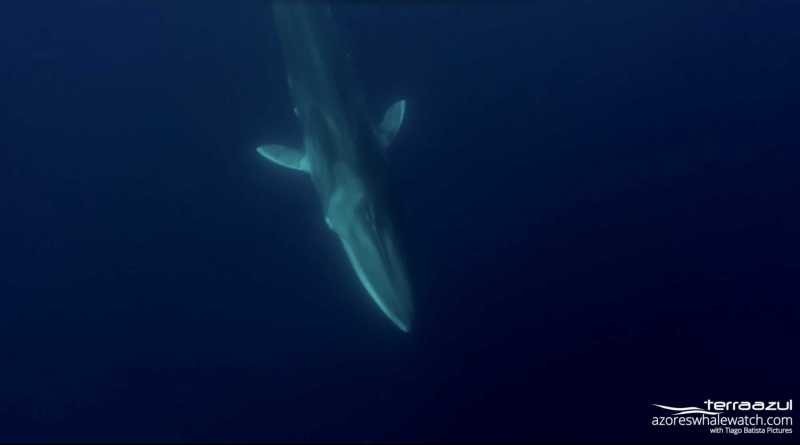
The Fin Whale is the second largest whale in the world after de Blue whale and as the other baleen whales, the females are bigger than the males. They are among the fastest of the rorqual group, with speeds of 37 km/h. We can distinguish this whale by its colour on the lower jaw, because the left side is grey and white on the right side. Another way to distinguish is by the position of the dorsal fin, which is located backwards.
A female produces one single calf every 4 years. This calf is nursed between 6-8 months until it gains enough independence to go with the others to feeding grounds. These whales are often seen alone although sometimes are seen with 3 to 7 more whales.
An interesting fact about these whales is that the northern hemisphere whales never meet with the southern ones, because the patterns of migrations are reversed, so when the northern whales comes to lower latitudes to breed, the southern whales goes to lower latitudes too but to feed.
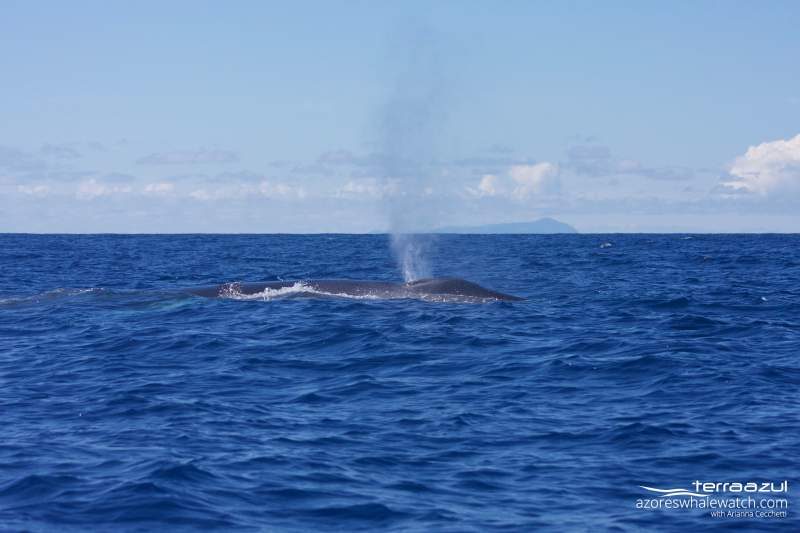
Fin Whale with Santa Maria Island in the background / Balaenoptera physalus
So, if you want to see these kind of cetaceans, come visit us in Terra Azul between April and June, because it’s the time we record more sightings, since they’re heading north.

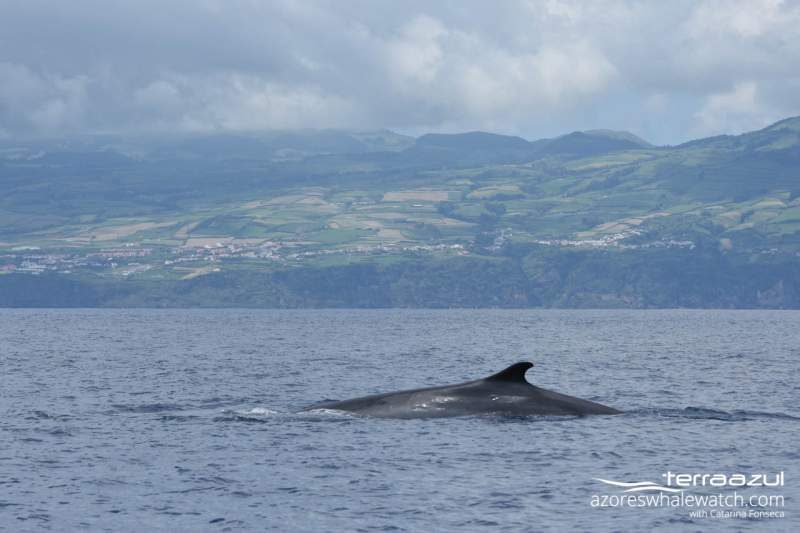











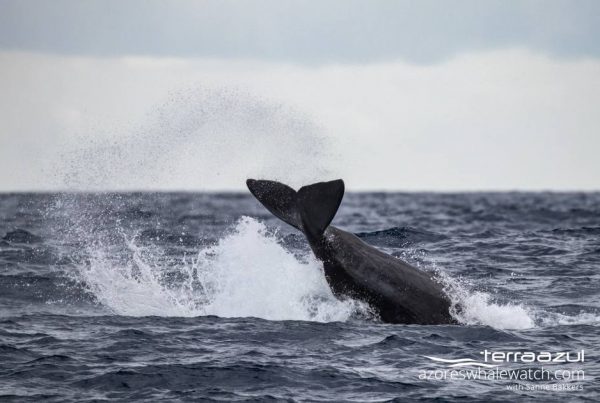
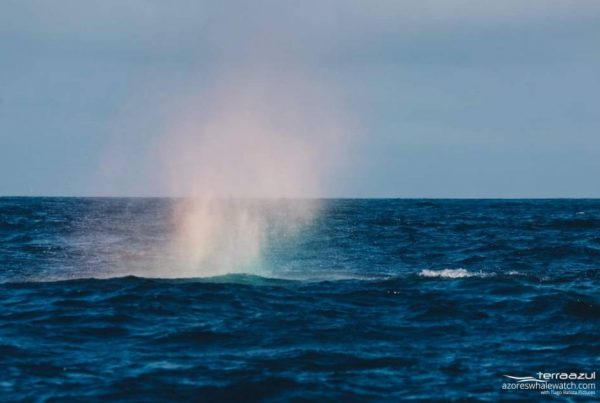
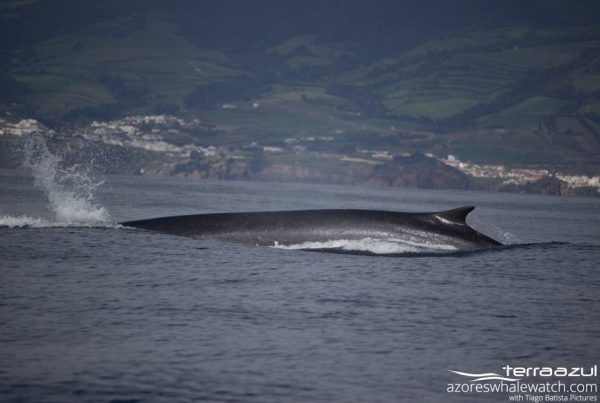



Your thoughts on this?